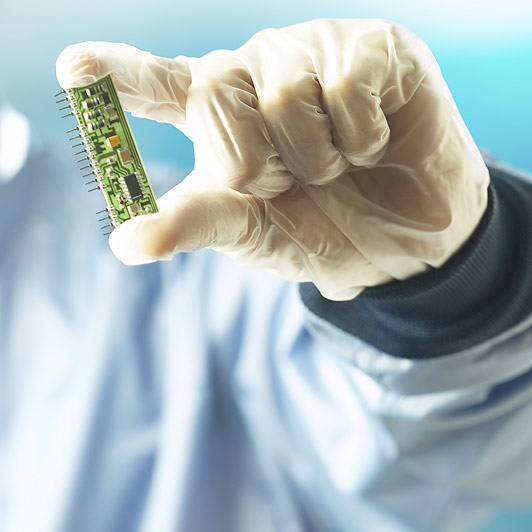
WEDNESDAY, Feb. 27 (HealthDay News) — The artificial pancreas — a treatment that’s been called the closest thing to a possible cure for type 1 diabetes — may be another step closer to becoming a reality.
Israeli researchers just released the findings from an overnight trial of their artificial pancreas system at three different camps for youngsters with type 1 diabetes. The artificial pancreas system was able to maintain better blood sugar levels, and helped prevent dangerous overnight drops in blood sugar levels, compared to an insulin pump and a continuous glucose monitor, according to the study.
“There is hope for better control without the fear of [low blood sugar levels], and therefore improvement in quality of life is coming soon,” said study author Dr. Moshe Phillip.
Philip is director of the Institute for Endocrinology and Diabetes at the National Center for Childhood Diabetes at the Schneider Children’s Medical Center of Israel, in Tel Aviv. The findings appear in the Feb. 28 issue of the New England Journal of Medicine.
Type 1 diabetes is an autoimmune disease in which the body’s immune system turns against healthy cells. In type 1 diabetes, the immune system attacks beta cells in the pancreas, effectively destroying the body’s ability to produce the hormone insulin. Insulin helps metabolize carbohydrates from food and fuels the body’s cells.
Insulin can’t be replaced with a pill. It must be injected with a shot or delivered by a pump that uses a tiny catheter inserted under the skin. This catheter must be changed every few days. The problem with both techniques is that people have to estimate how much insulin they’ll need based on the foods they eat and how much activity they’ll be doing.
Too much insulin can result in low blood sugar levels (hypoglycemia), which makes a person with diabetes feel awful, and if left untreated, can cause a person to pass out. Low blood sugar levels can even lead to death. Too little insulin leads to high blood sugar levels (hyperglycemia), which over time can cause serious complications, such as heart disease and kidney and eye problems.
An artificial pancreas could potentially solve those problems by taking over the decision-making process and applying sophisticated computer algorithms to decide how much insulin is needed at any given moment.
But developing such a device isn’t easy. It has to be able to continuously detect patients’ blood sugar levels and know whether the levels are trending up or down. There also has to be a piece of the device that holds and delivers insulin. Right now, most artificial pancreas devices, including the one tested in this study, use already-available insulin pumps and continuous glucose monitors. Such monitors measure blood sugar levels every few minutes with a sensor that’s inserted under the skin, and send the results to a transmitter.
An artificial pancreas also needs a place to house its computer program or algorithm. Right now, that’s generally housed in a laptop that sits on the bedside overnight, as it was in the current study. The hope is that the algorithm could exist within one of the other devices, or maybe even as an application on a cell phone.
In the new study, 56 children from three different diabetes camps in Israel, Slovenia and Germany were randomly assigned to an overnight session on the artificial pancreas, or with standard treatment using an insulin pump and continuous glucose monitor. The following night, they switched.
All of the children had type 1 diabetes, and were between the ages of 10 and 18.
Diabetes camps offer a great place to test the artificial pancreas, because the children are often far more active than usual. All that extra activity leaves them prone to low blood sugar levels throughout the night. Also, staff members are already assigned to check blood sugar levels at certain times in the night.
The artificial pancreas system tested in this study shuts off insulin delivery when it senses that blood sugar levels are going too low. It can also deliver additional insulin when blood sugar levels are rising.
A low blood sugar level is below 70 milligrams per deciliter (mg/dL). On nights that children were on standard treatment, 36 episodes of low blood sugar occurred. On nights that youngsters were on the artificial pancreas, only 12 low blood sugar episodes occurred. Phillip said adjustments could be made to the artificial pancreas to reduce the number of episodes on the artificial pancreas even further.
One diabetes expert talked about the device.
“Overnight control is the most difficult and worrisome part of diabetes management,” explained Aaron Kowalski, vice president for treatment therapies at JDRF (formerly the Juvenile Diabetes Research Foundation), based in New York City.
“It’s amazing how effective the artificial pancreas is at reducing low blood sugar levels without having to wake up a child and make them eat something, which disturbs their sleep, adds calories to their day and leaves sugar on their teeth overnight,” Kowalski said.
The artificial pancreas also maintained blood sugar levels at an average of about 126 mg/dL compared to 140 mg/dL for the standard treatment. The goal of insulin treatment is to maintain blood sugar levels as low as possible without dropping below 70 mg/dL, so the artificial pancreas offered more effective treatment.
Phillip said his group is now testing the artificial pancreas in people’s homes.
JDRF’s Kowalski said outpatient trials of different artificial pancreas systems are going on in the United States as well.
More information
For more about the artificial pancreas system, visit the U.S. Food and Drug Administration.

